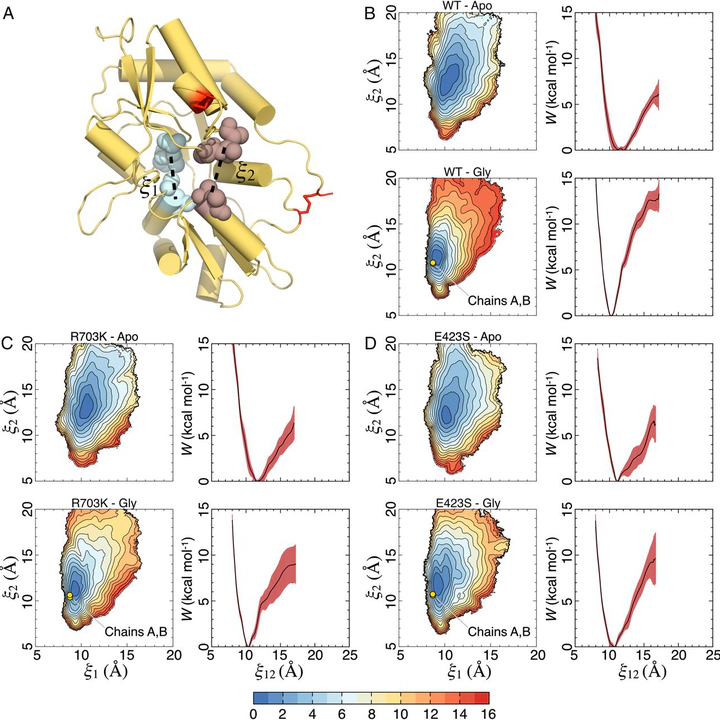 Alvin Yu
Alvin Yu
Abstract
Glycine-activated ionotropic glutamate receptors (iGluRs) encoded in ctenophore genomes are evolutionary precursors to NMDA receptors, which play important roles in synaptic plasticity. Ctenophore iGluRs feature a distinct interdomain salt bridge in the ligand-binding domain, a molecular lock, that thus far has not been found in iGluRs of other organisms. We use a combination of crystallographic, biochemical, electrophysiological, and computational approaches to elucidate the role of this molecular lock in a ctenophore iGluR. We find that perturbations to the lock can tune receptor kinetics and thermodynamics over very broad ranges. We also find that the strategic location of the lock may be the basis for the ligand-binding domain’s extraordinarily high affinity for glycine.